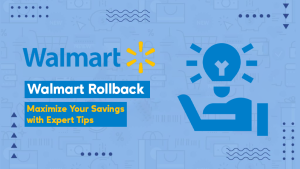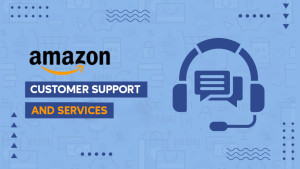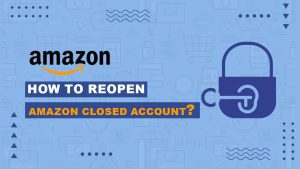Introduction
Dropshipping is a popular e-commerce model that allows you to sell products online without having to deal with inventory, warehousing, or shipping. Instead, you partner with a third-party supplier who handles these aspects for you. You only pay for the products that you sell, and you keep the difference between the retail price and the wholesale price as your profit margin.
Dropshipping has many benefits, such as low startup costs, low risk, high scalability, and flexibility. You can sell almost anything online, from clothing and accessories to electronics and furniture. You can also choose your own niche, target market, and branding strategy.
However, dropshipping also has some challenges, such as finding reliable suppliers, managing customer service, optimizing your website, and competing with other dropshippers. To succeed in dropshipping, you need to have a clear plan, a solid strategy, and a lot of dedication.
In this guide, we will explore the concept of dropshipping and provide step-by-step guidance on how to start and succeed in this popular e-commerce model.
We will cover the following topics:
- What is dropshipping and how does it work?
- How to find a profitable niche and products to sell.
- How to find and choose a reliable dropshipping supplier.
- How to set up your online store and optimize it for conversions.
- How to market your dropshipping business and drive traffic to your website.
- How to manage your orders, inventory, and customer service.
- How to scale your dropshipping business and grow your revenue.
What is dropshipping and how does it work?
Dropshipping is a retail fulfillment method where you act as an intermediary between the customer and the supplier. You don’t have to buy or store any products yourself. Instead, you list the products on your website or online marketplace, and when a customer places an order, you forward it to the supplier who then ships it directly to the customer.
The process of dropshipping can be summarized as follows:
- You find a product that you want to sell on your website or online marketplace.
- You list the product on your website or online marketplace with a markup price that covers your profit margin.
- A customer visits your website or online marketplace and buys the product from you.
- You collect the payment from the customer and place an order with the supplier using the customer’s details.
- The supplier ships the product directly to the customer and provides you with a tracking number.
- You update the customer with the tracking information and confirm the delivery.
- You keep the difference between the retail price and the wholesale price as your profit.
As you can see, dropshipping is a simple and convenient way to sell products online without having to handle any physical inventory or logistics. However, it also requires a lot of research, planning, and management to run a successful dropshipping business.
How to find a profitable niche and products to sell
One of the most important steps in starting a dropshipping business is finding a profitable niche and products to sell. A niche is a specific segment of a market that has a distinct demand, audience, and competition. A product is an item that satisfies a customer’s need or desire.
Finding a profitable niche and products to sell can be challenging, but not impossible. Here are some tips on how to do it:
- Do market research: Use tools like Google Trends1, Keyword Planner2, Amazon Best Sellers3, AliExpress Hot Products4, etc. to find out what products are trending, popular, or in high demand in different markets. Look for products that have high search volume, low competition, high profit margin, and positive reviews.
- Identify your target audience: Think about who your ideal customers are, what problems they have, what solutions they need, what interests they have, what demographics they belong to, etc. This will help you narrow down your niche and tailor your products accordingly.
- Analyse your competition: Find out who your competitors are in your niche, what products they are selling, how they are marketing them, what their strengths and weaknesses are, etc. This will help you identify gaps in the market that you can fill with your unique value proposition.
- Validate your niche and products: Before you invest in any niche or product, make sure that there is enough demand for it, that you can source it at a reasonable price from a reliable supplier, that you can differentiate yourself from other sellers, that you can comply with any legal or ethical regulations5, etc. You can use tools like Shopify’s Exchange Marketplace6or Flippa7 to find existing dropshipping stores in your niche and see how they are performing.
How to find and choose a reliable dropshipping supplier
Another crucial step in starting a dropshipping business is finding and choosing a reliable dropshipping supplier. A dropshipping supplier is a third-party company that provides you with the products that you sell on your website or online marketplace. They are responsible for storing, packing, and shipping the products to your customers.
Finding and choosing a reliable dropshipping supplier can be tricky, but not impossible. Here are some tips on how to do it:
- Use online directories: There are many online directories that list verified and reputable dropshipping suppliers from different countries and niches. Some of the most popular ones are SaleHoo8, Spocket, Wholesale Central, Worldwide Brands, etc. You can browse these directories by category, location, price, rating, etc. and contact the suppliers that match your criteria.
- Use online platforms: There are also many online platforms that connect dropshippers with suppliers and automate the order fulfillment process. Some of the most popular ones are AliExpress, Oberlo, Doba, Dropified, etc. You can use these platforms to find and import products from thousands of suppliers, sync your inventory and pricing, track your orders and shipments, etc.
- Do your due diligence: Before you choose a dropshipping supplier, make sure that you do your due diligence and check their background, reputation, quality, service, etc. You can do this by reading their reviews, testimonials, policies, terms and conditions, etc. You can also order some samples from them to test their product quality, packaging, shipping time, customer service, etc.
How to set up your online store and optimize it for conversions
Once you have found a profitable niche and products to sell and a reliable dropshipping supplier to work with, you need to set up your online store and optimize it for conversions. An online store is a website or an online marketplace where you showcase and sell your products to your customers. A conversion is an action that you want your customers to take on your online store, such as making a purchase, signing up for a newsletter, leaving a review, etc.
Setting up your online store and optimizing it for conversions can be easy or hard depending on the platform you choose to use. Here are some tips on how to do it:
- Choose a platform: There are many platforms that you can use to create and manage your online store, such as Shopify, WooCommerce, BigCommerce, Magento, etc. Each platform has its own pros and cons in terms of features, pricing, ease of use, customization, integration, etc. You need to choose a platform that suits your needs, budget, and skills.
- Choose a domain name: A domain name is the address of your online store on the internet, such as www.yourstore.com. You need to choose a domain name that is relevant to your niche and products, easy to remember and spell, catchy and unique, and available to register. You can use tools like Namecheap or GoDaddy to find and register your domain name.
- Choose a theme: A theme is the design and layout of your online store that determines how it looks and functions. You need to choose a theme that is responsive (i.e., adapts to different screen sizes), fast (i.e., loads quickly), user-friendly (i.e., easy to navigate), SEO-friendly (i.e., optimized for search engines), and customizable (i.e., allows you to change colours, fonts, images, etc.). You can use free or paid themes from different sources, such as Shopify Theme Store, ThemeForest, TemplateMonster, etc.
- Add your products: Once you have chosen your theme, you need to add your products to your online store. You need to upload high-quality product images, write compelling product descriptions, set competitive product prices, assign product categories and tags, add product variants and options (such as size, colour, etc.), etc. You can use tools like Loox or Yotpo to collect and display product reviews from your customers.
- Optimize your store: After you have added your products, you need to optimize your store for conversions. You need to create engaging content for your homepage, about page, contact page, blog, etc. You need to add trust elements such as logos, testimonials, social proof, security badges, etc. You need to add calls-to-action such as buttons, pop-ups, banners, etc. You need to add upsells, cross-sells, bundles, discounts, etc. You need to use analytics tools such as Google Analytics or Hotjar to track and improve your store performance.
How to market your dropshipping business and drive traffic to your website
Setting up your online store and optimizing it for conversions is not enough if you want to succeed in dropshipping. You also need to market your dropshipping business and drive traffic to your website. Traffic is the number of visitors that come to your website and view your products. Without traffic, you won’t have any sales or revenue.
Marketing your dropshipping business and driving traffic to your website can be hard or easy depending on the strategies you use. Here are some tips on how to do it:
- Use SEO: SEO stands for search engine optimization, which is the process of improving your website’s visibility and ranking on search engines such as Google or Bing. SEO can help you attract organic (i.e., free) traffic from people who are searching for products or information related to your niche. To use SEO effectively, you need to optimize your website’s content, structure, speed, mobile-friendliness, etc. You also need to do keyword research, link building, content marketing, etc. You can use tools like Moz or SEMrush to analyse and improve your SEO performance.
- Use PPC: PPC stands for pay-per-click, which is a form of online advertising where you pay a fee every time someone clicks on your ad. PPC can help you attract paid (i.e., targeted) traffic from people who are interested in your products or niche. To use PPC effectively, you need to create and manage campaigns on platforms such as Google Ads or Facebook Ads. You also need to set a budget, choose a bidding strategy, select keywords, write ad copy, design ad creatives, etc. You can use tools like Google Analytics or Facebook Pixel to track and measure your PPC results.
- Use SMM: SMM stands for social media marketing, which is the process of using social media platforms such as Facebook, Instagram, Twitter, Pinterest, etc. to promote your brand, products, and website. SMM can help you attract social (i.e., viral) traffic from people who are following or engaging with your content. To use SMM effectively, you need to create and maintain profiles on different social media platforms. You also need to post relevant, valuable, and engaging content regularly, interact with your followers and potential customers, run contests and giveaways, collaborate with influencers, etc. You can use tools like Buffer or Hootsuite to manage and schedule your social media posts.
- Use email marketing: Email marketing is the process of using email to communicate with your existing or potential customers. Email marketing can help you build trust and loyalty with your audience, increase conversions and retention rates, and drive repeat traffic and sales to your website. To use email marketing effectively, you need to build an email list of subscribers who have opted in to receive your emails. You also need to create and send email campaigns that are personalized, relevant, timely, and enticing. You can use tools like Mailchimp or ConvertKit to create and manage your email marketing campaigns.
How to manage your orders, inventory, and customer service
After you have marketed your dropshipping business and driven traffic to your website, you need to manage your orders, inventory, and customer service. These are the operational aspects of running a dropshipping business that ensure that your customers receive their products on time and are satisfied with their purchase.
Managing your orders, inventory, and customer service can be tedious or smooth depending on the systems you have in place. Here are some tips on how to do it:
- Use automation tools: Automation tools are software applications that help you automate and streamline various tasks related to order fulfillment, inventory management, customer service, etc. For example, you can use tools like Shopify’s Order Printer app or OrderlyEmails app to print invoices, packing slips, and shipping labels for your orders. You can use tools like Shopify’s Inventory Planner app or Stocky app to track and optimize your inventory levels, reorder points, and stock alerts. You can use tools like Shopify’s Gorgias app or Zendesk app to handle customer inquiries, complaints, and feedback across multiple channels (such as email, phone, chat, social media, etc.)
- Use tracking tools: Tracking tools are software applications that help you track and monitor the status and location of your orders and shipments. For example, you can use tools like Shopify’s AfterShip app or Tracktor app to provide real-time tracking information for your customers on your website. You can also use tools like Shopify’s ShippingEasy app or ShipStation app to compare shipping rates, print shipping labels, and generate shipping reports for your orders.
- Use quality control tools: Quality control tools are software applications that help you ensure that the products you sell are of high quality and meet the expectations of your customers. For example, you can use tools like Shopify’s Loox app or Yotpo app to collect and display product reviews from your customers. You can also use tools like Shopify’s Product Reviews app or me app to moderate and respond to product reviews on your website.
How to scale your dropshipping business and grow your revenue
Once you have managed your orders, inventory, and customer service, you need to scale your dropshipping business and grow your revenue. Scaling your dropshipping business means expanding your product range, reaching new markets, increasing your sales volume, and improving your profitability. Growing your revenue means increasing your income, reducing your expenses, and maximizing your profit margin.
Scaling your dropshipping business and growing your revenue can be challenging or rewarding depending on the strategies you use. Here are some tips on how to do it:
- Use data analysis: Data analysis is the process of collecting, processing, and interpreting data related to your dropshipping business. Data analysis can help you make informed decisions, identify opportunities, solve problems, and optimize your performance. To use data analysis effectively, you need to use tools like Google Analytics or Shopify’s Reports and Analytics to measure and analyse key metrics such as traffic, conversions, sales, revenue, costs, etc. You also need to use tools like Google Optimize or Shopify’s Optimizely app to run experiments and test different variations of your website, products, ads, etc.
- Use outsourcing: Outsourcing is the process of delegating or hiring someone else to do certain tasks or functions for your dropshipping business. Outsourcing can help you save time, money, and resources, as well as access specialized skills and expertise. To use outsourcing effectively, you need to identify the tasks or functions that you can outsource, such as product research, content creation, web design, SEO, PPC, SMM, email marketing, order fulfillment, customer service, etc. You also need to find and hire reliable and qualified freelancers or agencies that can do these tasks or functions for you. You can use platforms like Upwork or Fiverr to find and hire freelancers or agencies for your dropshipping business.
- Use diversification: Diversification is the process of adding new products, markets, channels, or models to your dropshipping business. Diversification can help you reduce risk, increase exposure, and generate more revenue. To use diversification effectively, you need to research and validate new products, markets, channels, or models that are relevant to your niche and audience. You also need to test and launch them gradually and carefully, and monitor their performance and feedback.
Conclusion
Dropshipping is a popular e-commerce model that allows you to sell products online without having to deal with inventory, warehousing, or shipping. Dropshipping has many benefits, such as low startup costs, low risk, high scalability, and flexibility. However, dropshipping also has some challenges, such as finding reliable suppliers, managing customer service, optimizing your website, and competing with other dropshippers.
To start and succeed in dropshipping, you need to follow these steps:
- Find a profitable niche and products to sell
- Find and choose a reliable dropshipping supplier
- Set up your online store and optimize it for conversions
- Market your dropshipping business and drive traffic to your website
- Manage your orders, inventory, and customer service
- Scale your dropshipping business and grow your revenue
We hope this guide has given you a comprehensive overview of dropshipping and how to start and succeed in this popular e-commerce model. If you have any questions or comments, please feel free to leave them below.
We also recommend that you check out some of the sources that we have used for this guide,
such as:
- Shopify’s Dropshipping 101
- Oberlo’s How to Start a Dropshipping Business in 2023
- SaleHoo’s The Ultimate Dropshipper List of 60 Suppliers in 2023
- Moz’s Beginner’s Guide to SEO
- Shopify’s Ecommerce Marketing Blog
These sources contain more information, tips, and resources on dropshipping and e-commerce that can help you further.
Thank you for reading this guide,
and we wish you all the best in your dropshipping journey!





